The Gift of South Dakota
Subscriptions to South Dakota Magazine make great gifts!
Subscribe today — 1 year (6 issues) is just $29!
Steinbeck and Charley
Oct 10, 2017
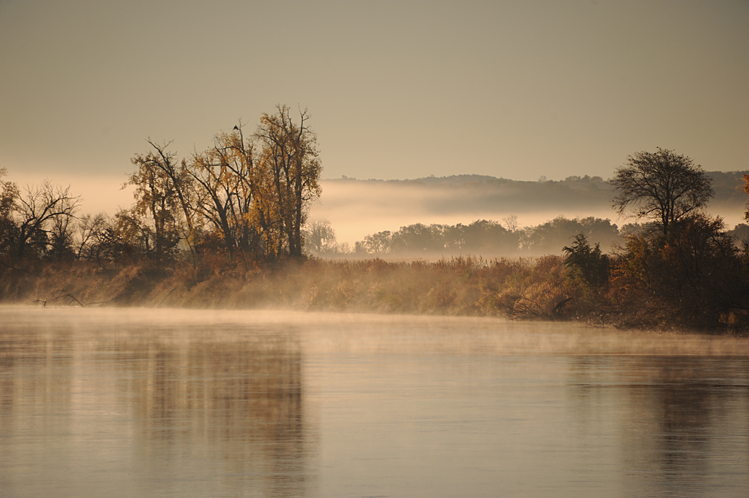 |
| For John Steinbeck, the Missouri River divided East from West. |
In the fall of 1960, John Steinbeck, soon to win a Nobel Prize for a lifetime of literary contributions, encountered the Missouri River. He wrote: “I came upon it in amazement. Here is where the map should fold. Here is the boundary between east and west.”
Steinbeck had loaded his dog, Charley, into a truck and set off across 34 states. He logged 10,000 miles searching for the nation’s essence. The trip yielded a great nonfiction book, Travels With Charley, and if you haven’t read it please find a copy.
Over the past several years I’ve retraced sections of Steinbeck’s trip. Like him I’ve sensed the intimidating enormity of the continent, struggled with bad directions from well-meaning folks, and jumped into conversations with strangers in diners. Although Steinbeck authored classic novels, no one recognized him — much to his satisfaction.
Half a century to the week after Steinbeck passed through the heartland, it felt like he sat in my passenger’s seat as I followed his route. I shared his “rich with butter-colored sunlight” view of Wisconsin, and got swept into the same “great surf of traffic” into St. Paul on old U.S. Highway 10. Later, there was the Missouri dividing east from west so that “the two sides of the river might well be a thousand miles apart.” I should note that Steinbeck crossed the river at Bismarck, not in South Dakota. But his feel for the entire heartland is one of the best parts of the book. He was a native Californian living in New York and everything about our part of the country felt fresh. He encountered colorful characters on the prairie (we’ve always produced plenty), with the best being a friendly yet very reticent Badlander who feels like an uncle to most of us with Great Plains roots. I actually found myself looking for the old guy, leaning against a barbed wire fence as he did in 1960, a little more stooped with age. Not that he would have volunteered to say anything to me.
Fortunately for Steinbeck most of the people he met were more talkative, especially in the heartland. They spoke about worries related to “job uncertainty” and national security in a time of international strife. Americans I met still talk about those matters. One thing that disappointed Steinbeck was how no one wanted to discuss politics. “It seemed to me partly caution and partly a lack of interest, but strong opinions were just not stated,” he wrote. What’s surprising about that is he made his drive during the Kennedy-Nixon presidential campaign. We tend to think of that as a political season that got lots of Americans engaged, but that’s not what Steinbeck observed. I can report that times have changed. Everyone, it seems now, has a political point of view, everything can be politicized, and opinions are stated strongly. Steinbeck might appreciate the noisy political discussions he’d hear in today’s early morning coffee joints, but he’d quickly note that there’s very little debate. Like-minded coffee drinkers tend to gather and preach to the choir.
Long before Facebook and Twitter made it possible to share life in detail with legions worldwide, Steinbeck observed a value people placed in maintaining respectful distance. “A direct or personal question is out of bounds ... he did not ask my name nor I his,” he wrote of a farmer he talked to for a long while. So there’s mystery behind many of the people he described, and they haunted me as I passed their way. What was with the flighty waitress (with an aunt in Sioux Falls) who Steinbeck said could pass for either a young, troubled girl or spry old woman? And what drew a roving Shakespearian actor to a camping spot along the Maple River at Alice, North Dakota?
By no means is the book all about cautious conversation, Wisconsin sunlight, and vistas from Missouri River bluffs. Racial tensions had heated to a boiling point in 1960. In New Orleans, Steinbeck felt nauseated after witnessing a cruel, calculated protest against school integration. Obscenities were hurled at children. He painted the scene vividly but it’s easy to see that Steinbeck was naive in one respect. He saw racial injustice as a southern problem. As the rest of the 1960s revealed, there was racial injustice in northern cities, too, and in Indian Country.
Unlike the very first readers who picked up Travels With Charley a couple years after the trip, we know what waited in the wings — assassinations, Vietnam, riots that took lives and burned cities. Throughout the book there’s an uneasiness that Steinbeck sensed, as if Americans were bracing themselves for something without being able to guess exactly what. “My grandfather knew the number of whiskers in the Almighty’s beard,” one man told the author. “I don’t even know what happened yesterday, let alone tomorrow ... we’ve got nothing to go on — got no way to think about things.”
Maybe thinking is best done in retrospect, which makes Travels With Charley more valuable now. And for all our thinking, there are eternal things Steinbeck found that exist beyond our influence: the power of autumn winds on the prairies, and how starlight alone can make the Badlands glow on moonless nights. They’re part of the nation’s essence, too.
Editor’s Note: This column is revised from the November/December 2010 issue of South Dakota Magazine. To order a copy or to subscribe, call (800) 456-5117.



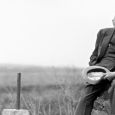
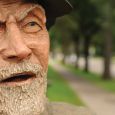
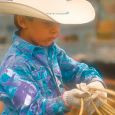
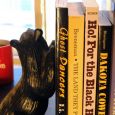



Comments